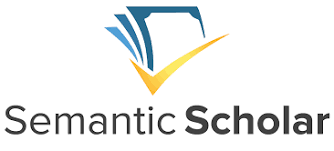The Value of Characters in Tabob Folklore (the Leatherback Turtle) in Southeast Maluku
DOI:
https://doi.org/10.47616/jamrsss.v3i2.275Keywords:
Character Values, Tabob Folklore, West Kei-Small Sub-District (Ohoirah) Southeast MalukuAbstract
This study aims to (1) describe the form of character values in the Tabob folklore, Southeast Maluku district. (2) Describe the function of the Southeast Maluku Tabob folklore. (3) Analyzing the character values of the Southeast Maluku Tabob folklore. The data in this study are, in the form of written or spoken words from the informants. Sources of data in this study are informants, documents of informants, informants or the community who provide information about local fishermen's folklore. Other data sources such as. The data collection techniques are observation, interview, documentation, and literature study. The data analysis technique used is data reduction, data presentation, and drawing conclusions. The results of the study show that the process of revealing intermediate values in the three folk tales of fishermen, by using respondents or fishermen and local communities who understand the three folklores to provide data. This can be seen from some of the respondents or fishermen who are able to provide data related to the three folklores of Southeast Maluku fishermen well and implemented.
Downloads
References
Bunanta, M. (1998). Problematika penulisan cerita rakyat untuk anak di Indonesia. Jakarta: Balai Pustaka.
Endraswara, S., & Hum, M. (2013). Folklor Nusantara. Yogyakarta: Ombak.
Finnegan, R. (2012). Oral literature in Africa (p. 614). Open Book Publishers.
Hagar, S. (2006). Decoding Radical Constructs through Stories of Ethiopia Jews. Jurnal of Folklore Research 24(6). 1-33.
Hasanuddin, W. S. (2021). Social Function of Text of Oral Tradition of Lullaby Song Coastal Region of Minangkabau Collective in West Sumatra. In Ninth International Conference on Language and Arts (ICLA 2020) (pp. 100-110). Atlantis Press.
James, D. (1994). Folkor Indonesia “Ilmu Gosip, Dongeng dan lain-lain”. Jakarta: Pustaka Utama Garfiti.
Juanda, J. (2010). Peranan Pendidikan Formal dalam Proses Pembudayaan. Lentera Pendidikan: Jurnal Ilmu Tarbiyah dan Keguruan, 13(1), 1-15.
Lurii︠a︡, A. R. (1976). Cognitive development: Its cultural and social foundations. Harvard university press.
Ministry of National Education. (2010). Pedoman Pengembangan Pendidikan Karakter. Jakarta: Kemendiknas
Ministry of National Education. (2010). 18 Prinsip Pendidikan Karakter Yang Efektif. Jakarta: Kemendiknas
Ratna, N. K. (2011). Antropologi sastra: Peranan unsur-unsur kebudayaan dalam proses kreatif. Jakarta: Pustaka Pelajar.
Rivkin, J., & Ryan, M. (Eds.). (2017). Literary theory: An anthology. John Wiley & Sons.
Teeuw, A. (1994). Satra dan Ilmu Satra: pengantara Teori Sastra. Jakarta: Pustaka Jaya
Thao, Y. J. (2006). The Mong oral tradition: Cultural memory in the absence of written language. McFarland.
Winarsih, K., Priyadi, T., & Wartiningsih, A. (2022). Nilai-Nilai Budaya Dalam Antologi Kunang-Kunang Cerita Rakyat Selakau Timur. Jurnal Pendidikan Dan Pembelajaran Khatulistiwa (JPPK), 11(2).
Downloads
Published
How to Cite
Issue
Section
License
Copyright (c) 2022 Journal of Asian Multicultural Research for Social Sciences Study

This work is licensed under a Creative Commons Attribution-ShareAlike 4.0 International License.































